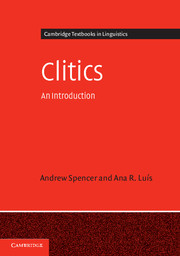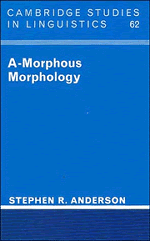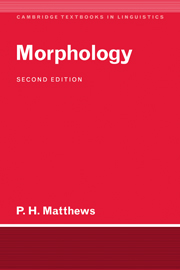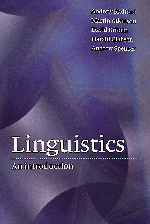Clitics
In most languages we find 'little words' which resemble a full word, but which cannot stand on their own. Instead they have to 'lean on' a neighbouring word, like the 'd, 've and unstressed 'em of Kim'd've helped'em ('Kim would have helped them'). These are clitics, and they are found in most of the world's languages. In English the clitic forms appear in the same place in the sentence that the full form of the word would appear in but in many languages clitics obey quite separate rules of placement. This book is the first introduction to clitics, providing a complete summary of their properties, their uses, the reasons why they are of interest to linguists and the various theoretical approaches that have been proposed for them. The book describes a whole host of clitic systems and presents data from over 100 languages.
- Provides a basic overview of clitics as well as a useful starting point for further research
- Offers a theory-neutral survey of clitics, including phonological, morphological and syntactic aspects
- Includes a summary of the conceptual and theoretical issues raised by clitic systems
Reviews & endorsements
'… a reliable and well organized guide through the fascinating world of clitics. The authors deserve praise for the lucid and balanced way in which they present and analyze clitic phenomena in such a remarkably wide range of languages.' Geert Booij, University of Leiden
'Clitics are the marsupials of language, a class of creatures lying between words and affixes. In this lucid introduction, Spencer and Luís show how clitics illuminate crucial properties of language.' Mark Aronoff, Stony Brook University
Product details
July 2012Paperback
9780521682923
388 pages
246 × 174 × 17 mm
0.77kg
8 tables
Available
Table of Contents
- 1. Preliminaries
- 2. The functions of clitics
- 3. Types of clitic system
- 4. Clitics and phonology
- 5. Clitics and morphology
- 6. Clitics and syntax
- 7. Clitics, affixes and words
- 8. Approaches to clitics
- 9. Envoi.








